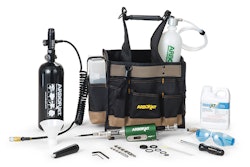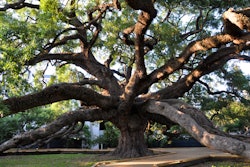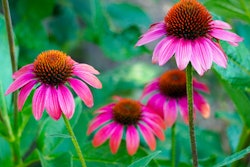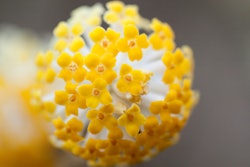Flowering shrubs are a long-standing favorite among those who appreciate an ornamental that provides diversity in the landscape. They come in various shapes and sizes, and the evergreen variety can sustain an element of color year-round. But despite the many choices out there, it’s best to stick with what you know.
Rhododendron
Some varieties of rhododendrons can be temperamental, but not all. You can choose from a wide array of sizes and colors, and these plants may be evergreen or deciduous with large or small leaves.
- Northern Lights
Northern Lights are a group of deciduous azalea hybrids that have a good display and impressive growth performance. The plants are compact, grow about 6 feet in height and spread, with clustered blooms and begin in late May. They are winter-hardy to 45-degrees-Fahrenheit. While most azaleas demand acid soil for optimum growth, Northern Lights grows well in soils with neutral pH as long as you amend the soil with acid peat.There are also clones in this series that are worth consideration. ‘Golden Lights’ features yellow blooms, and reaches a height of 4 feet, and ‘Spicy Lights’ grows larger (about 6 feet) with salmon-colored flowers. ‘Pink Lights,’ ‘Rosy Lights’ and ‘White Lights’ flower in the colors their names suggest, and follow similarly in growth and hardiness to the original Northern Lights plants.
- Witchhazels
If you have a landscape that requires a tolerant plant, consider witchhazels. They can grow in sun or partial shade and tolerate dry, sandy soils or wet clay-type soils. Choose Hamamelis virginiana for vibrant yellow color in the fall or Hamamelis vernalis for yellow-orange blooms in late winter. You’ll get even more color variation from the Intermedia hybrids in this category. Notably, the ‘Arnold Promise’ boasts clear, yellow flowers in later winter, and ‘Diane’ will bloom red.
Viburnum
Popular varieties of viburnum include highbush cranberry (Viburnum trilobum) and Koreanspice viburnum (Viburnum carlesii), but you should also consider ‘Summer Snowflake’ and ‘Autumn Jazz’.
‘Summer Snowflake’ (Viburnum plicatum var. tomentosum) blooms all summer, beginning in June. One of the most unique features of this shrub is its horizontal branching structure, but it can grow to 8 feet tall. In the fall, it swaps its blooms for red and black berries with burgundy foliage.
‘Autumn Jazz’ (Arrowwood viburnum), also blooms through the summer, producing creamy white flowers. But this shrub really shines in the fall with spectacular hues of yellow-orange that turn into red and burgundy. It grows up to 10 feet tall and 12 feet wide.
Hydrangea
They are hardy to -30 degrees.
Fahrenheit and will grow in partial shade. While they prefer well-drained soil, they will adapt to other soil conditions. One of their most appealing features is that these shrubs provide flowering late-summer color.
Choose ‘Pink Diamond’ for its long, white flowers that turn to a deep pink, or ‘Unique’ for its white cluster-type flowers that turn a lighter pink. Both grow to about 9 feet tall and spread just as wide.









